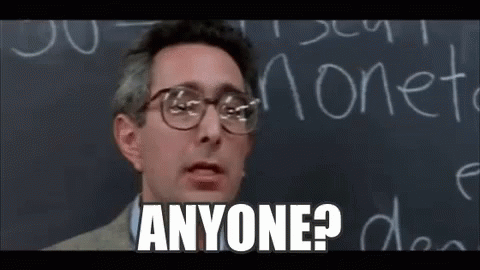Why 'disrupting education' doesn't work
Back
This piece was originally published on The Confident Teacher here.
There are trillions of choices teachers make when they teach. This dizzying complexity makes teaching rewarding, tiring, stressful, and sometimes even thrilling.
Understandably, faced with the complexity of the classroom, teachers are necessarily creative, but they also seek out stability and tranquillity. For many teachers, hearing calls for ‘disrupting education’, or the mention of radical reform sounds disconcerting and threatening.
It is often the case that the reimagining of education emerges from outside the classroom. Well-meaning thinkers see rapid technological changes happening, or children immersed in the latest game, and they imagine their easy and attractive implementation in the classroom.
When you actually take the time to explore inside the classroom, and speak to teachers, the barriers to bold new ideas become clearer. In her brilliant book, ‘Inside Teaching’, Mary Kennedy (a US educationalist), she lifts the lid on real (US) teachers and their perceptions and feelings. She revealed teachers pursuing the avoidance of distractions, their aims for tranquillity, and even the dampening of pupil engagement when is threatens the necessary calmness of the classroom.
There is an enduring meme of dull, dry teaching that is pervasive in our culture. But is it fair?

Rather than some caricature of soulless, dull, or even controlling teachers, Kennedy presents a more subtle notion of small ‘c’ conservative attitudes to teaching:
“These intentions are quite different from the authoritarian motives that critics often attribute to teachers’ routines. Teachers clearly view routines as important contributors to emotional and social tranquillity.”
Page 92, Inside Teaching
Shiny, new approaches that break beyond typical classroom structures and routines are often disruptive in real terms – at least at first – and so teachers naturally resist this risk to their hard-earned routines.
Why shift seldom happens
Every few years, ambitious policy makers the world over-enact significant curriculum shifts (‘Shift happens’, anyone?). We have seen the fuzzy notion of ‘21st Century Skills’ come and go. Classrooms get redesigned and new roles are assigned. New technology often proves a favourite motivator, and method, to transform the classroom from its traditional ‘teacher at the front’ focus.
And yet, teachers are brilliant at quiet, closed-door resistance. In a recent study by Darren Hannah, Claire Sinnema & Viviane Robinson (2021), entitled ‘Understanding curricula as theories of action’, they characterise curriculum reform in Japan and the staunch rejection of new curricula designed to disrupt more traditional approaches.
In 1999, policy makers initiated the ‘Yutori’ reforms – which aimed to usher in a ‘Relaxed education’ or ‘Zest for Life’ reforms. Traditional subjects were cut and approaches like ‘Integrated Studies’ were added to the curriculum. Teachers assimilated some of the practices into their existing habits, but Junior School teachers simply refused to enact the majority of these progressive new curriculum plans, given they clashed with their beliefs and hard-won annual gains.
In Japan, the glossy new curriculum was quietly shelved. The real ‘change makers’ closed their classroom doors and carried on teaching.
Vivianne Robinson has helpfully characterised why so many ‘disruptive’ changes fail. In her aptly named book, ‘Reduce Change to Increase Improvement’, she describes teachers’ ‘theory of action’: that is to say, their ingrained beliefs and practices that drive their behaviour and choices in the classroom. Too often, new teaching policy ideas bypass teachers’ real priorities. By not talking with teachers, they fail to understand the real barriers to new practices and change, along with the hard-won habits of teachers.
Her answer – and one I would share – is that we need to talk to teachers and better understand their beliefs and needs. I suspect they’ll seldom include a desire to radically disrupt their routines. This small ‘c’ conservative attitude is no Luddite rejection of new ideas; it is most typically founded on a care for their pupils and the privileging of calm stability in the crucible of the classroom.
Let’s then make a call for careful, gradual change that is shared with teachers and is sensitive to the complexities and stresses of the classroom. It won’t prove as catchy as ‘Shift Happens’. It is unlikely to generate a stack of slick YouTube videos. But it just might work.
Alex Quigley is national content manager for the Education Endowment Foundation, and also writes and consults on education. He is a former teacher and school leader.

